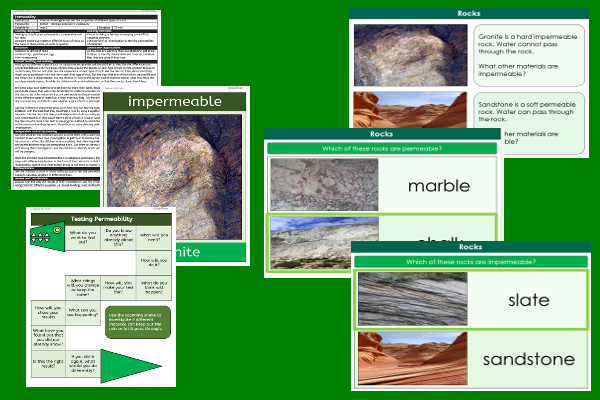Home > Key Stage Two > Science > Year Three Planning > Rocks
Lesson Two – Permeability

This science teaching pack for Key Stage Two gets the children to investigate and test the properties of different types of rocks according to their matching material property for permeability.
The class can explain and model how to conduct a fair test by keeping some of the variables in the investigation constant to identify whether a material is permeable to impermeable.
Download this teaching pack including a lesson plan, classroom activities and an interactive presentation to investigate and test the properties of different types of rocks according to their matching material property for permeability
Activities in this teaching pack include display posters to identify the properties of different materials in relation to their permeability and a template to plan and conduct an investigation to test the permeability of different types of rocks.
The interactive presentation gets the children to explore how to test the properties of different types of rocks according to their permeability.
This lesson is part of a science scheme of work to get the children to identify, compare and classify different types of rocks, soils and fossils according to their matching material properties for appearance, texture and substance. There are teaching activities for shared learning, differentiated worksheets to support independent learning and interactive presentations to introduce concepts and key skills.
-

Length Calculations
Practise using number calculations skills for addition, subtraction, division and multiplication when solving problems related to length measurements
-

Maths Calculations Assessment
Assess abilities in solving a range of different number problems for addition and subtraction when working with informal and formal written calculations
-

Determinant Lists
Explain and model how to make lists of objects used and found in different locations to match the correct determinants of a and an
-

English SPAG Assessment
Assess abilities in composing sentences for fiction and non-fiction using the correct spellings, punctuation marks and grammar vocabulary phrases
